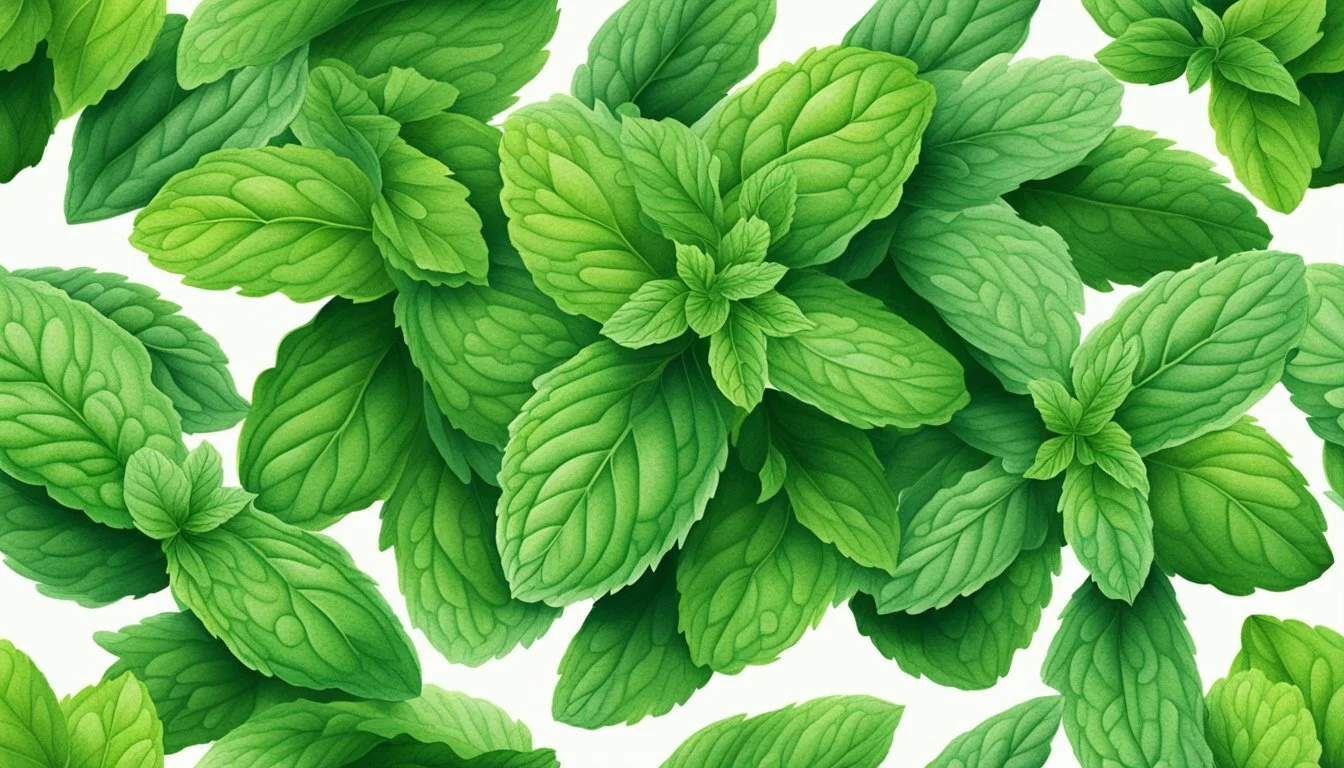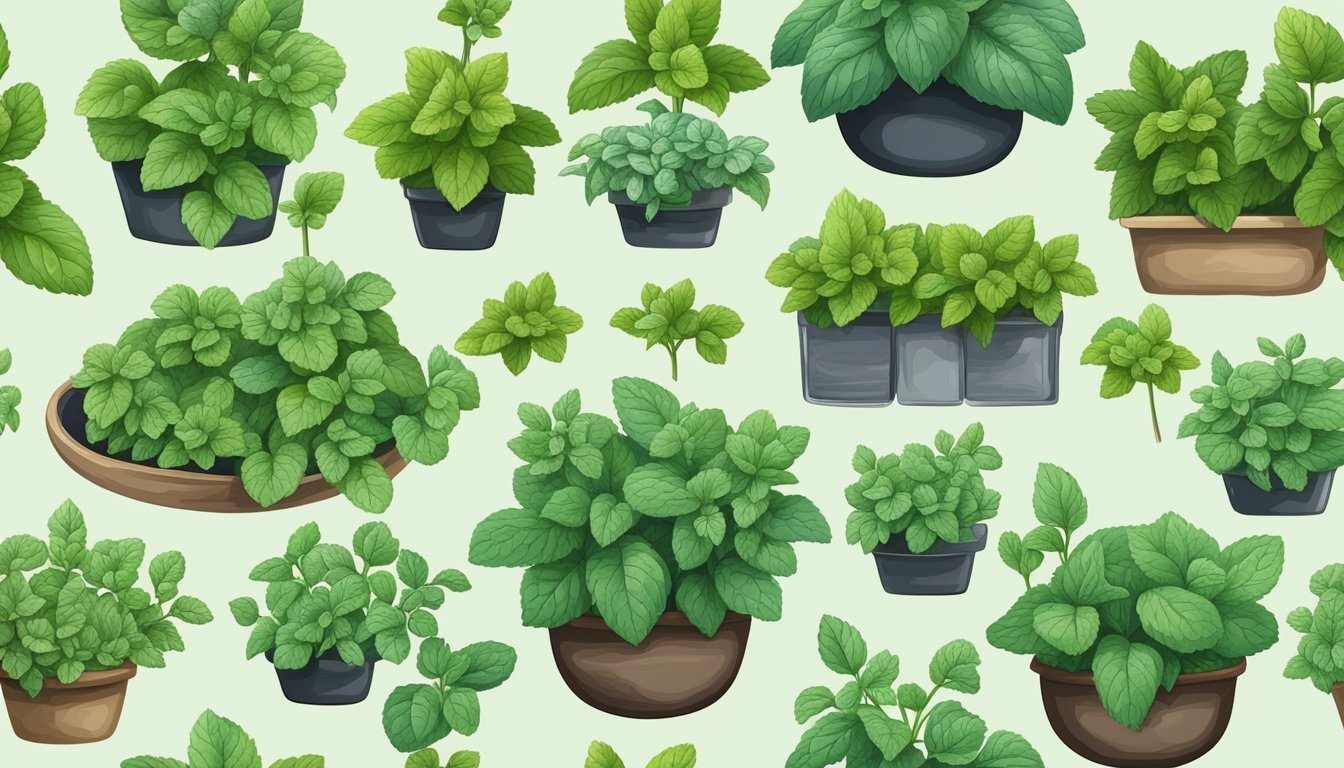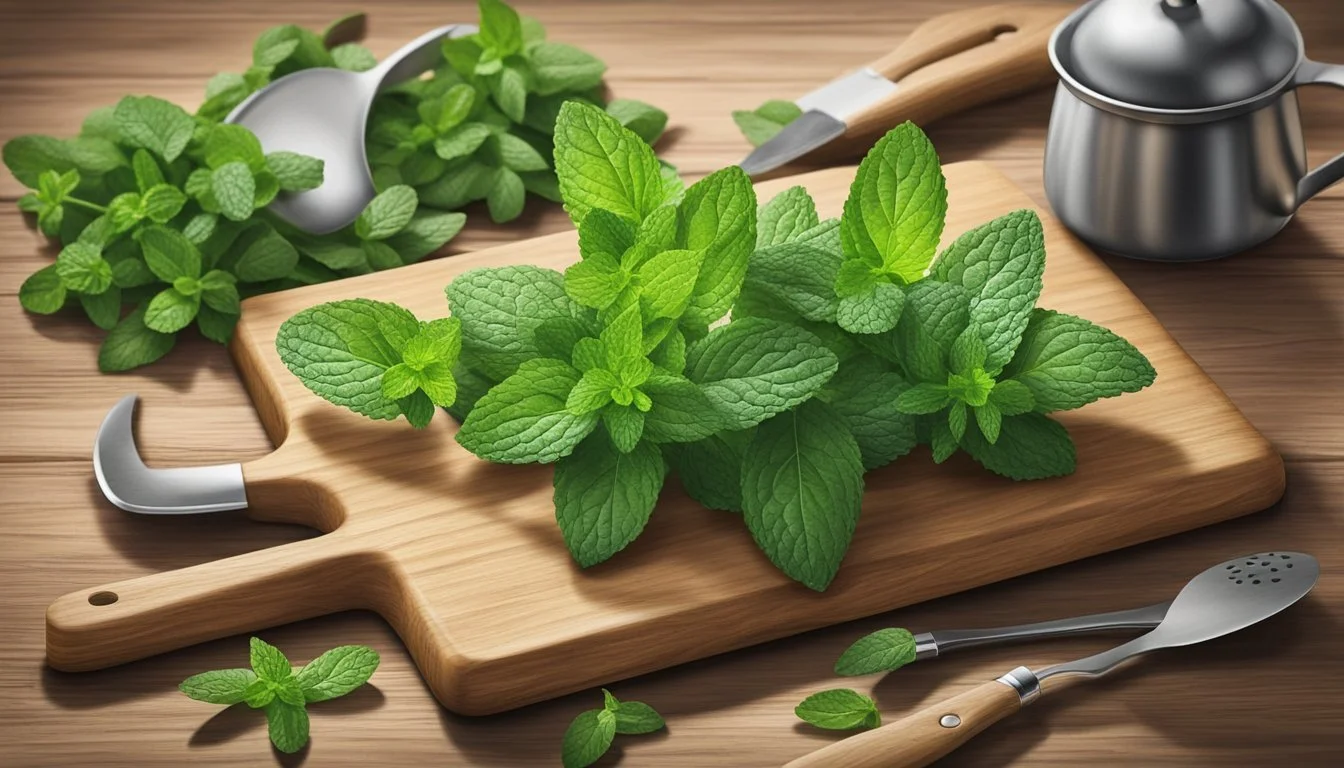How Long Does Mint Last?
Shelf Life and Preservation Tips
Mint is a versatile and beloved herb known for its refreshing taste and aromatic properties. When it comes to preserving its freshness, the shelf life of mint can vary significantly depending on the method of storage. Generally, fresh mint will retain its quality for about 7 to 10 days when stored properly in the refrigerator. To extend its lifespan, appropriate storage techniques must be employed, as the delicate leaves are prone to wilting and discoloration if not handled correctly.
Proper storage not only maintains the integrity of the mint's flavor and texture but also ensures that its vibrant green hue and potent essential oils are preserved. Factors influencing the shelf life of mint include ambient temperature, humidity, and the initial freshness of the herb at the time of purchase. Recognizing the right approach to storing fresh mint can significantly influence its endurance, allowing it to remain a lively addition to dishes, teas, and cocktails for an extended period.
By understanding and implementing the optimal storage conditions, one can effectively manage the shelf life of mint. The herb's longevity is maximized when it is treated with care from the moment it is harvested to its ultimate use in culinary applications. Whether stored on the countertop, wrapped in a damp paper towel, or frozen for long-term use, each method has its own merits and suitability depending on individual usage and convenience.
Understanding Mint and Its Varieties
Mint, belonging to the Mentha genus, is a versatile and aromatic group of plants widely recognized for their cooling sensation and fresh taste. They are a staple in herb gardens, celebrated for their culinary, medicinal, and aromatic properties.
Common Varieties:
Spearmint (Mentha spicata): Often used in cooking for its milder flavor.
Peppermint (Mentha × piperita): Known for its strong, pungent aroma and cool taste.
Apple Mint (Mentha suaveolens): Distinguished by its fuzzy leaves and mild apple scent.
Chocolate Mint (Mentha × piperita 'Chocolate'): Combines a minty flavor with nuances of chocolate.
Characteristics:
Fresh mint leaves are potent with volatile oils, which contribute to their signature scent and flavor profile. These oils differ in concentration among the varieties, affecting their longevity and strength.
Growing Conditions:
Members of the Lamiaceae family, they share this distinction with other herbs such as basil, cilantro, dill, and parsley. These relatives often have similar growing requirements — thriving in moist soil with access to partial shade or sun.
Harvest and Use:
When harvested, fresh mint leaves enhance both sweet and savory dishes, adding a burst of flavor unique to each variety. Fresh herbs like mint are essential to cuisines worldwide; their contribution is not just in taste but also in providing a sensory experience with their distinctive aromas.
Factors Affecting Mint Freshness
Mint freshness is largely influenced by environmental factors and handling. How one stores mint plays a significant role in determining its shelf life. Proper attention to temperature and moisture is critical.
Temperature and Environment
Mint requires a cool environment to maintain its freshness. Ideal storage temperatures range between 32°F (0°C) and 40°F (4°C), which is typically achieved in refrigerators. Exposure to temperatures above room temperature can accelerate the degradation process, leading to a loss of flavor and color.
Additionally, mint should be kept away from direct sunlight as it can cause wilting and diminish its quality. The surrounding environment should be clean and free from contaminants that could affect the herbs' freshness.
Humidity and Moisture
Maintaining the right balance of humidity and moisture is crucial in preserving mint. While mint requires some moisture to stay fresh, too much can promote mold growth and decay. The following points outline best practices for moisture management:
Trimming: Trim the ends of the mint stems before storage to enhance water absorption.
Water Storage: Place mint stems in a jar filled with a small amount of water, similar to a bouquet. Alternatively, mint can be stored in a moistened paper towel placed in a perforated bag to avoid excess moisture accumulation.
Humidity Control: For those who choose to refrigerate their mint, enclosing it in a container or bag can help maintain optimal humidity levels.
By controlling temperature and moisture levels, they can effectively prolong the freshness and usability of mint, allowing for an extended shelf life and consistent flavor profile.
Ideal Storage Conditions for Mint
To maintain mint's freshness, one must consider factors like temperature, humidity, and exposure to air. Each storage method aims to retain the herb's vibrant color and essential oils for as long as possible.
In the Refrigerator
Storing fresh mint in the refrigerator is one of the best ways to extend its shelf life. To store mint in the fridge:
Place the mint stems in a jar with an inch of water, much like a bouquet of flowers.
Loosely cover the leaves with a plastic bag to create a greenhouse effect.
Replace the water every few days to keep it clear. Typically, mint can last in the fridge for up to 2 weeks with this method.
At Room Temperature
Mint can also be stored at room temperature for a shorter period:
Fill a jar with water and trim the mint stems before placing them like flowers.
Keep the jar on a counter away from direct sunlight.
Change the water regularly to prevent cloudiness. This technique keeps mint fresh for about 1 week.
Using Freezing Methods
Freezing fresh mint is an effective way to preserve its flavor and freshness for months. There are a few different methods to do this:
Ice Cube Method: Chop the mint and distribute it into the sections of an ice cube tray. Cover the herbs with water and freeze.
Baking Sheet Method: Lay individual mint leaves on a baking sheet and freeze until solid. Transfer to an airtight container or freezer bag. Mint stored via freezing can last for several months and is best used in cooked dishes where the change of texture upon thawing is less noticeable.
Proper Techniques to Store Fresh Mint
Proper storage of fresh mint is crucial for maintaining its freshness and flavor. Effective methods involve preliminary preparation, hydration techniques, and drying processes.
Trimming and Preparing
Before storing mint, one should trim the stems and remove any wilted or discolored leaves. Trimming helps the mint absorb water more effectively, which can extend its freshness.
Using Water for Freshness
Storing mint in water mimics its natural growing conditions and keeps it fresh. One can fill a jar with water, place the trimmed mint stems into the jar as if arranging flowers, and store it on the counter. To ensure longevity, they should change the water as soon as it becomes cloudy, generally every couple of days.
Drying and Dehydrating Methods
For long-term preservation, mint can be dried or dehydrated. One can lay out the leaves on a drying rack or baking sheet, and air-dry them or place them in a dehydrator at low heat until completely dry and brittle. After drying, the leaves should be stored in an airtight container away from direct sunlight.
Maximizing Mint Shelf Life
Proper storage and care can significantly extend the shelf life of mint, ensuring that it retains its freshness and flavor for as long as possible. By understanding freshness indicators, handling mint correctly, and knowing how to revive wilted leaves, one can enjoy mint at its best for longer periods.
Identifying Freshness Indicators
Mint is freshest when its leaves are vibrant in color and possess a strong, characteristic smell. The appearance of the leaves can be a clear indicator of their condition. Fresh mint leaves should be:
Color: Bright green, without any signs of browning or yellowing.
Smell: Pungent and aromatic, indicative of essential oils within the plant.
Texture: Crisp and springy to the touch.
One should look out for signs of discoloration or an off smell, as these are signs that the mint may no longer be at its freshest.
Handling and Care
To extend the life of mint, one must employ proper handling and storage techniques. This can ensure that mint maintains its taste and aromatic qualities for an extended period, typically up to 12 months under ideal conditions. Key handling and care tips include:
Immediate Storage: Mint should be stored promptly after purchase or harvesting.
Reduced Exposure: It should be kept away from direct sunlight and heat sources.
Humidity Control: In a humid environment, consider refrigeration to prevent wilting.
Airtight Containers: Use airtight containers or heavy-duty plastic bags to keep mint fresh.
For added longevity, mint can be frozen, which allows for preservation several months beyond the usual shelf life.
Reviving Wilted Mint
If mint begins to wilt, it’s not immediately necessary to discard it. Mint can often be rejuvenated with the following steps:
Trim the stems of the wilted mint.
Place the trim end into a glass of water.
Let it sit in this mini-hydration chamber, and the leaves may perk up.
Reviving mint in this way can allow one to extend its usability and freshness for a short period. This is particularly helpful when only the appearance has declined, while the smell and color remain intact, indicating that the mint still holds its flavor.
Common Issues and Solutions
Proper storage and care are essential for extending the longevity of mint. Knowing how to tackle common problems like mold and spoilage can significantly enhance the shelf-life of this aromatic herb.
Preventing Mold and Spoilage
To prevent mold and spoilage of mint, it is crucial to control moisture levels. They should store the mint in the refrigerator, ideally in a slightly open plastic bag to allow for a bit of air circulation. If moisture accumulates inside the bag, they should replace it with a dry one.
Refrigeration: Store mint at a low temperature in the fridge to slow down spoilage.
Air Circulation: Keep mint in a container that allows for some airflow to prevent mold growth.
Dry Leaves: Ensure the leaves are dry before storing to prevent excess moisture.
Addressing Discoloration and Odor
When mint leaves discolor or develop an odor, it's often a sign of the onset of spoilage. To address this:
Inspect leaves before use, discarding any that are yellow, brown, or have a musty smell.
Rinse mint leaves in cold water and thoroughly pat dry to remove potential contaminants that can cause spoilage.
Use mint as fresh as possible to ensure optimal texture and flavor.
Uses and Benefits of Fresh Mint
Fresh mint is not only a versatile herb that enhances food and drinks with its refreshing taste but also offers various health benefits and can be used for decorative purposes.
Culinary Applications
Fresh mint leaves are commonly used to add a fresh, aromatic flavor to a variety of dishes. Here are a few specific culinary uses:
Food: Mint is an essential ingredient in recipes like lamb dishes, salads, and sauces.
Drinks: It plays a pivotal role in beverages such as mojitos and iced tea, providing a cool, refreshing taste.
Health and Wellness
Mint is rich in nutrients and has several health benefits, which include:
Digestive Aid: It promotes digestion and can help alleviate symptoms of indigestion.
Soothes Colds: The menthol in mint is a natural decongestant that helps to break down mucus.
Stress Relief: A natural relaxant, the aroma of mint can help in easing stress and improving mental clarity.
Decorative and Aromatic Uses
Mint has decorative and aromatic qualities that make it valuable beyond the kitchen:
Fresh Flowers: Mint can be included in bouquets to add a pleasant aroma.
Aromatic Uses: It is often used in potpourris and scented candles due to its fresh, clean scent.
Creative Ways to Preserve and Utilize Mint
Preserving mint effectively extends its shelf life and provides a myriad of creative uses, from culinary to decorative. Two specific methods stand out for their practicality and imagination: freezing in various forms and creating mint-infused products.
Freezing Technique Variations
Method 1: Water Ice Cubes
Steps:
Wash and pat dry mint leaves.
Chop or leave whole, depending on preference.
Distribute mint into ice cube trays.
Fill trays with water.
Freeze and store in bags or containers.
Method 2: Bare Freezing
Steps:
Wash mint and trim the end of the tender stems.
Dry thoroughly.
Lay leaves flat on a baking sheet.
Freeze until solid, then transfer to airtight containers.
Advantages: Both methods make mint available for several weeks, maintaining flavor and freshness. They're ideal for adding to drinks like a classic mojito or to recipes directly from the freezer.
Mint-Infused Products
Mint Oil or Extract
Preparation:
Bruise or chop mint leaves to release oils.
Submerge in a carrier oil (for oil) or alcohol (for extract) in a sealed jar.
Store in a cool, dark place, shaking periodically.
Mint Ice Cream or Syrups
Preparation:
Simmer mint in cream (for ice cream) or simple syrup (for syrups).
Strain and use in desserts or cocktails.
Application: Fresh mint can be found at any grocery store, but these storing methods transform it into a long-lasting flavoring agent for various culinary delights. Mint-infused products elevate simple dishes with a fresh, aromatic kick.







